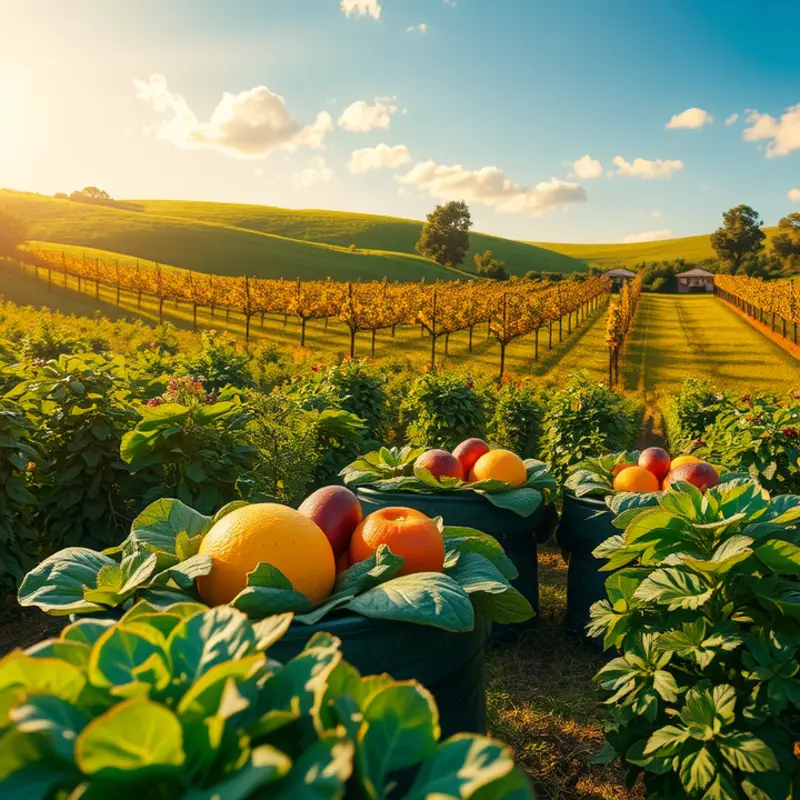Proper food management after cooking is essential to prevent bacterial growth, ensuring meals remain safe and delicious. By following clear storage guidelines and practicing smart food handling, you can enhance food safety, reduce waste, and keep your meals enjoyable for longer. Emphasizing best practices can help anyone maintain a healthier kitchen environment.
The Importance of Quick Cooling

Cooling cooked food promptly is a crucial step in food safety. Bacteria multiply rapidly in temperatures between 40°F and 140°F. This range, known as the “danger zone,” is where perishable food poses the greatest risk if left unchecked. Adopting effective cooling methods ensures leftovers remain safe and extend their usability.
A fundamental guideline is the “two-hour rule.” This rule emphasizes transferring cooked food from the heat source and beginning the cooling process within two hours. During this time, pathogenic bacteria can start to multiply, so adhering to this guideline dramatically reduces potential health risks. For hotter climates where room temperatures soar above 90°F, it’s essential to shorten this window to just one hour.
Choosing the right containers is essential for efficient cooling. Large, deep containers can trap heat, allowing temperatures to stay in the danger zone longer. Instead, use shallow containers designed to spread the food more evenly, increasing the cooling surface area. This allows the food to cool more rapidly, thus limiting bacterial growth. Containers made from metal or glass conduct heat effectively but remember that vented lids further facilitate cooling by allowing excess steam to escape.
An often overlooked, yet effective strategy, is dividing large portions of food. By splitting dishes such as stews or casseroles into smaller portions, you decrease the volume in each container, enhancing the speed and efficiency of cooling. This practice is particularly useful for meal preppers looking to store food safely over several days.
Refrigeration should not be delayed. Once divided and placed in appropriate containers, promptly store your food in the refrigerator. Adjust your fridge settings to maintain a consistent temperature below 40°F, ensuring a safe environment for your food. If your refrigerator is often filled to capacity, consider rearranging items to maximize airflow and enhance cooling efficiency.
For those interested in eco-friendly kitchen practices, eco-smart kitchen storage offers guidance on balancing sustainability with safety. This can be beneficial when adopting new storage methods that prioritize both food safety and environmental consciousness.
When dealing with large quantities of food, placing it in an ice bath can kickstart the cooling process. Fill a basin with ice water and submerge sealed containers until the food reaches room temperature. This method is particularly effective for soups or sauces, where a quick temperature drop is needed.
Finally, remember not to compromise safety for convenience. While the temptation to leave food out for guests or during meal buffets is understandable, establishing a habit of quick cooling prioritizes safety without sacrificing accessibility. By implementing these strategies, you maintain quality, reduce waste, and protect against the risks of bacterial growth.
Smart Storage Techniques

Storing cooked foods properly is crucial to minimizing bacterial growth and extending their shelf life. Choosing the right container is the first step. Opt for airtight glass or BPA-free plastic containers to maintain the freshness of your meals. Glass containers offer the added benefit of being microwave and oven safe, allowing for easy reheating without transferring to another dish.
Labeling your containers is equally important. Include the date when the food was prepared and a brief description. This practice not only helps identify contents quickly but also ensures you consume older items before newer ones, reducing food waste.
Temperature is a critical factor in food storage safety. Ensure your refrigerator is set to 40°F (4°C) or below. This temperature inhibits most bacterial growth but keeps your food fresh. For optimal freshness, store leftovers in smaller, shallow containers. This allows food to cool rapidly, reducing the time it spends in the danger zone between 40°F and 140°F (4°C and 60°C), where bacterial growth is accelerated.
The placement of food in the refrigerator also affects its longevity. Store cooked foods on shelves, preferably in the middle, where temperatures are stable. Avoid storing foods in the refrigerator door, as it experiences temperature fluctuations due to frequent opening and closing.
For more tips on reducing waste during meal prep, you might find low-waste cooking prep useful. This approach not only supports safer food storage practices but also aligns with eco-friendly habits.
By implementing these techniques, you can extend the lifespan of your meals while keeping them safe for consumption. This approach not only ensures food safety but also contributes to reducing overall food waste.
Final words
Preventing bacterial growth after cooking is crucial for food safety and reducing waste. Employing proper cooling methods, utilizing the right storage techniques, and being mindful of how long food is left at room temperature can make a significant difference. By following these practical tips, you not only extend the freshness of your meals but also contribute to a healthier kitchen. Practicing good food management is an investment in health and sustainability, ultimately enhancing your cooking experience.







